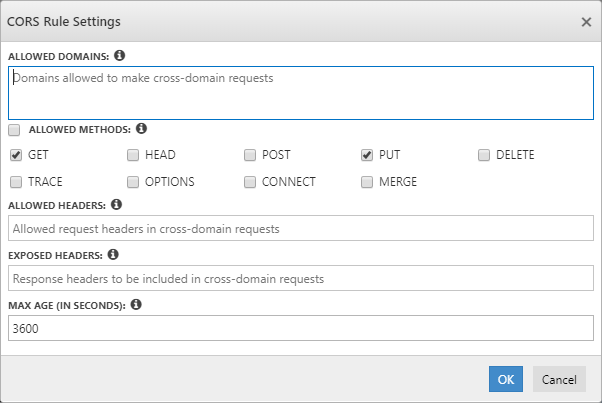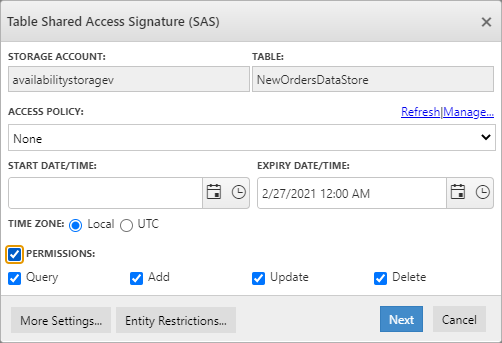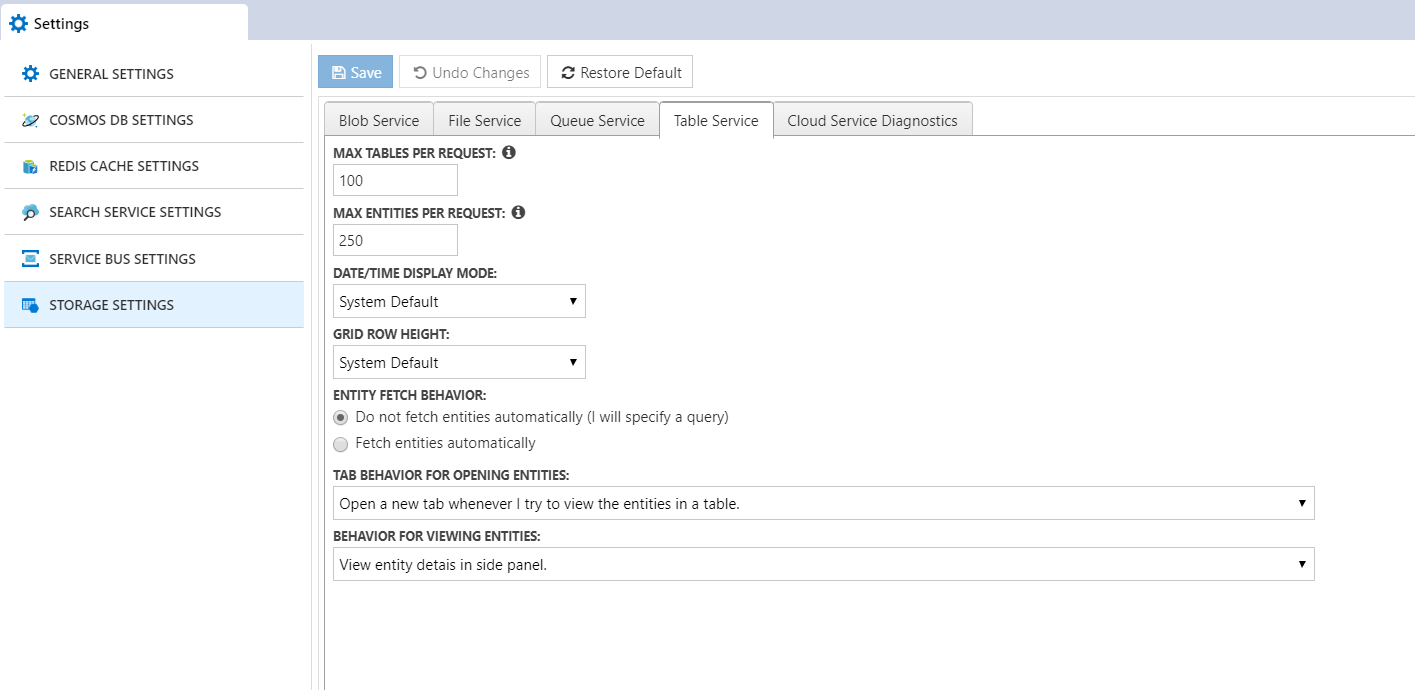- Print
- DarkLight
- PDF
Overview
Cerebrata makes managing the data stored in your table storage extremely easy. Cerebrata provides the most comprehensive set of features with full fidelity with Azure Table Storage REST API, from managing tables to entities.
With features like query manager, saved queries, copying entities from one table to another, download and more, the user doesn't need another tool for managing the table storage assets other than Cerebrata.
Add Table
Cerebrata offers the capability to create a Storage Table. It makes developers life more comfortable and saves time switching to the Azure Portal to create a Storage Table.
Following are the steps to create an Azure Storage Table:
1. Click the + button in the Table node. It will open a dialogue box
2. Provide the Table name
3. Click Save to add a Storage Table

CORS Settings
CORS is an HTTP feature that enables a web application running under one domain to access resources in another domain. Cerebrate also offers the capability to manage CORS Rules. Using Cerebrata, the user can create, delete, edit the CORS Rules.
Following are steps to create the CORS Rule:
- Select the context menu of the Table node and click CORS Settings
- It will open a popup showing list of CORS Rules that are already available. User can even the CORS Rules.
- Click New CORS Rule and provide appropriate information like Allowed Domains, Allowed methods, Allowed Headers, Exposed Headers, Max Age
- Click Ok to save the CORS Rule

Analytics Settings
Azure Storage Analytics performs logging and provides metrics data for a storage account. You can use this data to trace requests, analyze usage trends, and diagnose your storage account issues. Cerebrata offers options to changes the settings for Azure Storage Analytics as well. Analytics Setting provides three types of settings. They are,
1. Logging Settings: Logging settings allows user to configure the operations to log. It is possible to log Write, Read and Delete Operations. It also offers options to configure the retention for the log stored.
2. Hourly Settings: Hourly settings allows user to log the operations on an Hourly basis along with Retention policy
3. Minutes Settings: Minutes settings allows user to log the operations on every minute along with Retention policy
Delete All Tables
Consider when a QA team created multiple Storage Tables to perform testing. When the testing is over, the QA engineer would need to delete all the Storage Tables. Here comes Delete All Tables option in Cerebrata.
Following are the steps to delete all Storage Tables:
- Select the context menu of the Storage Table node and click Delete All Tables
- It will open a popup and ask the user to enter the numbers in the "VERIFICATION CODE" box into the "CONFIRM CODE" box beside it.
- Once the Verification code is entered, Click Delete to delete all the Tables in a Storage Account

A background task will delete storage Tables. You can track this task's progress by clicking on "Tasks" in the bottom left corner of the application window.
Clear Table
Using Cerebrata, the user can delete all entities from a table in a single click without deleting the Table itself.
Following are the steps to clear table entities:
- Select the context menu of the Storage Table node and click Delete Entities
- It will open a popup and choose whether to Delete all the entities or specific entities based on the query.
- Once the Verification code is entered, Click Delete to delete all the Tables in a Storage Account

Shared Access Signature & Permissions
Using Cerebrata, user can even manage Shared access Signature for Storage Tables. It also provides an option to define the access level needed for a SAS Token. It also Permissions to manage the Access Policy of the SAS Token. Click here to know about Shared Access Signature
Following are the steps to create SAS Token and URL for Storage Tables by defining the granular access:
Select the context menu of the appropriate Storage Table and click Shared Access Signature
This will open a Popup "Table Shared Access Signature (SAS)"
Select the level of access that needs to be provided along with the Expiry date of the SAS Token
Click Manage to create and delete Access policies

Click Next to get the SAS URL and Token for the selected Storage Table.
Settings
The user can enhance the management part of Storage tables in Azure Storage Account with Cerebrata's settings. To leverage these settings,
Navigate to Files > Settings > Application Settings > Storage Settings> Table Service
User can define the maximum number of tables to fetch from a storage account in a single request. The value provided must be greater than zero and less than or equal to 1000.

User can define the maximum number of entities to fetch from a table in a storage account in a single request. The value provided must be greater than zero and less than or equal to 1000.
Fetch the entities either automatically or by providing query by utilising the Entity Fetch Behaviour option.
Set Tab Behaviour for opening entities and Behaviour to view the entities in different panel views.
Cerebrata also offers the option to restrict the IP Address and protocol using Advanced settings. Click More Settings in the left bottom of the dialog to open Advanced SAS Settings.
